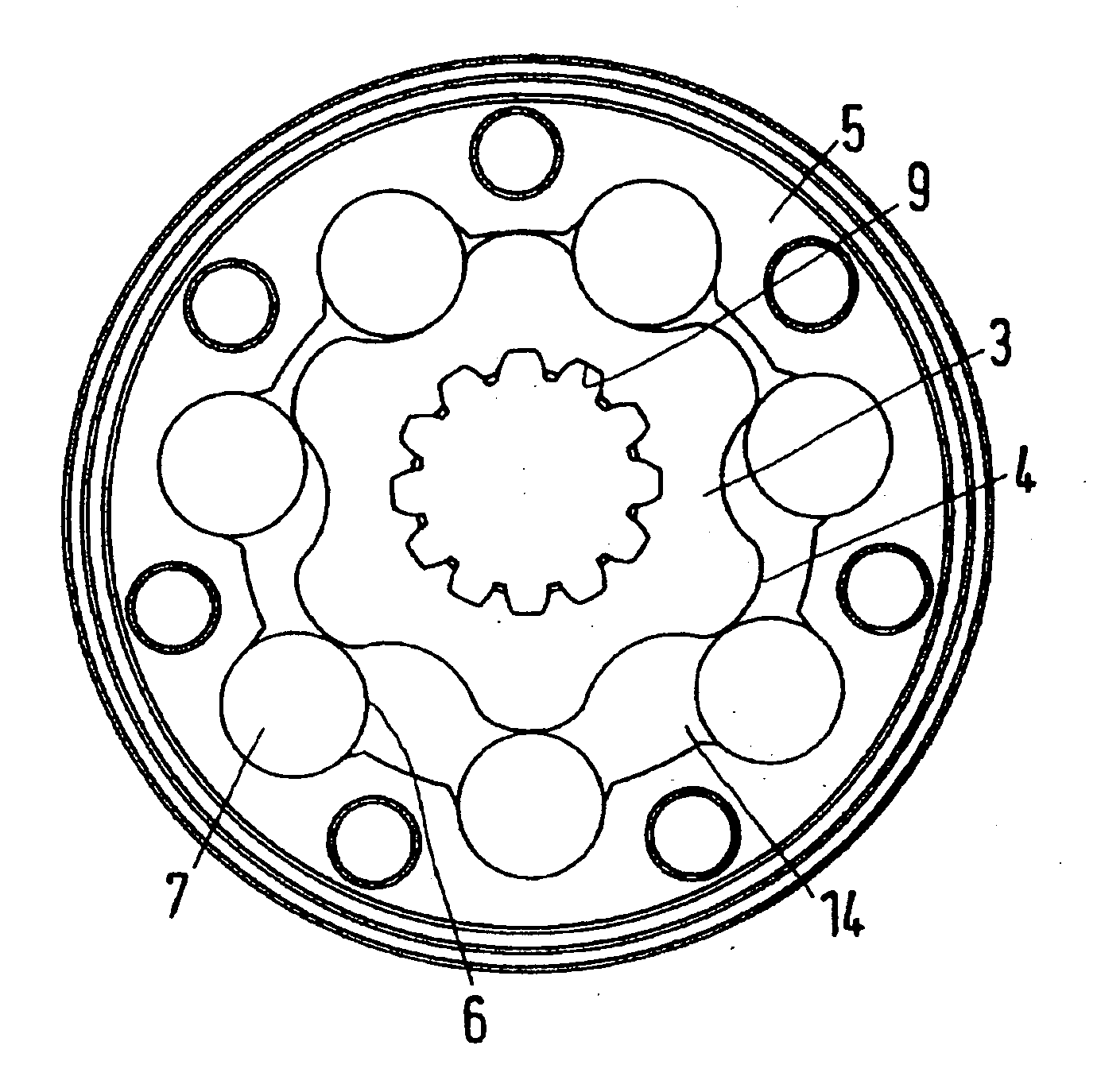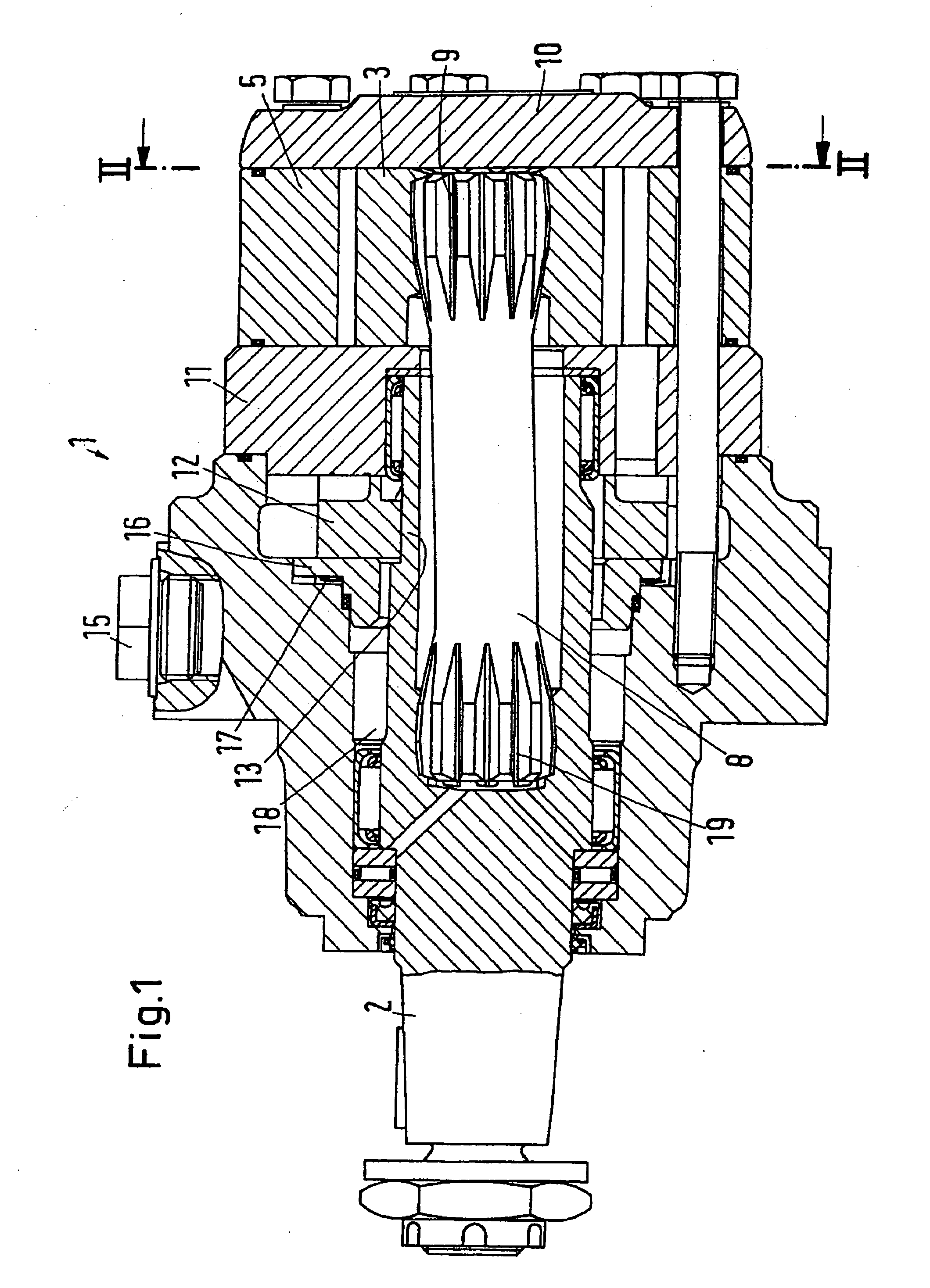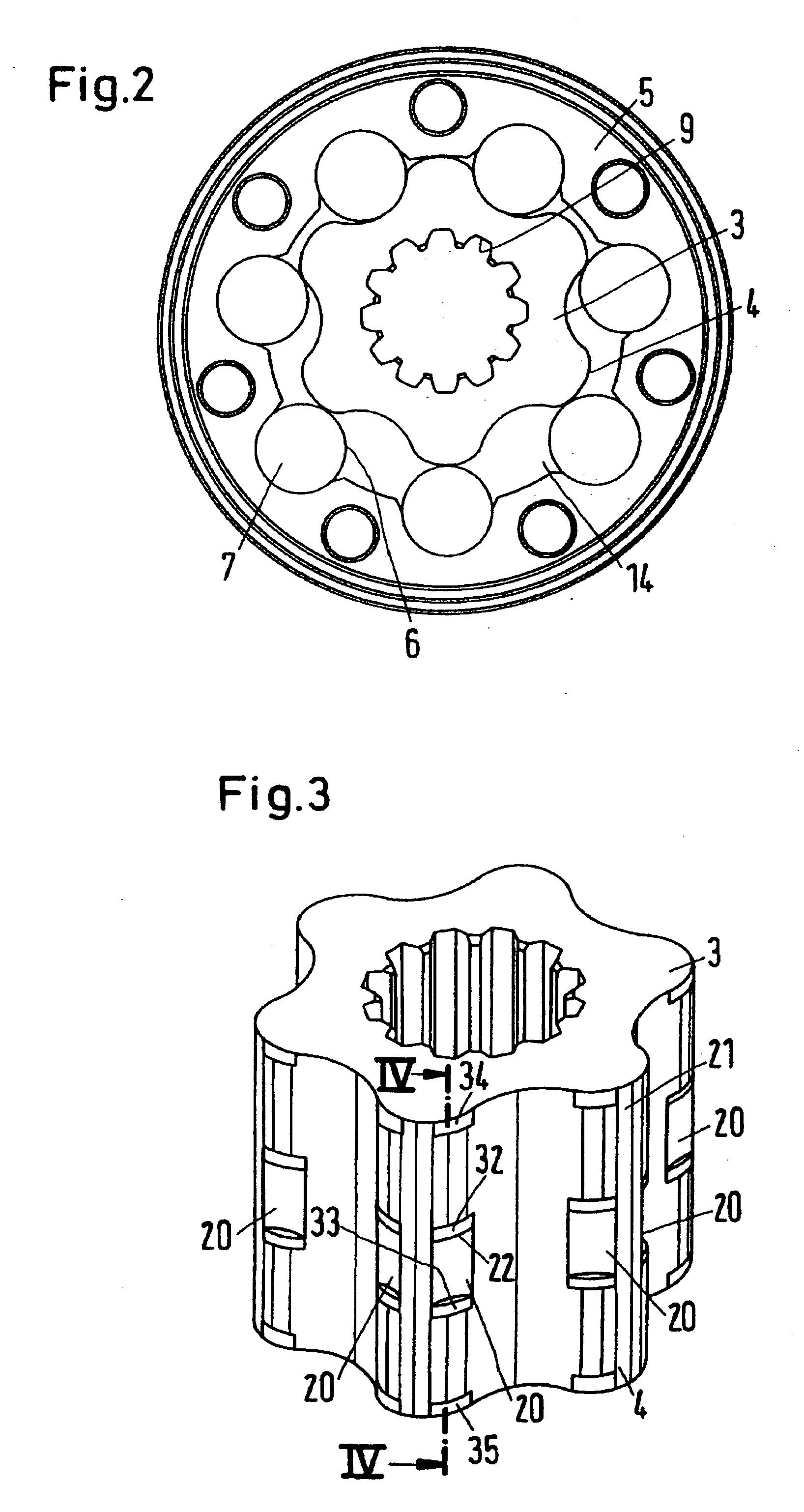Hydraulic machine
a hydraulic machine and toothed technology, applied in the direction of engine lubrication, rotary or oscillating piston engines, piston engines, etc., can solve the problems of increased risk of wear, increased wear, and inability to reach the clearance area, so as to reduce the risk of wear, increase the surface pressure, and the effect of extremely short transition area
- Summary
- Abstract
- Description
- Claims
- Application Information
AI Technical Summary
Benefits of technology
Problems solved by technology
Method used
Image
Examples
Embodiment Construction
[0022] A machine shown in FIG. 1 has the form of a motor 1, which has an output shaft 2. The output shaft 2 is driven by a gear wheel 3, which has an outer toothing 4 and rotates and orbits in a toothed ring 5, which has an inner toothing 6 in the form of rolls 7. The output shaft 2 is connected with the gear wheel 3 via a cardan shaft 8, which is inserted in an accordingly suitable toothing 9 on the inside of the gear wheel 3.
[0023] On the side turning away from the cardan shaft 8, the toothed set consisting of gear wheel 3 and toothed ring 5 is covered by a cover plate 10. On the opposite side the toothed set is covered by a channel plate 11, which interacts with a valve plate 12. The valve plate 12 engages an extension 13 of the output shaft 2, so that the valve plate 12 rotates synchronously with and in a predetermined angle relation to the gear wheel 3.
[0024] The channel plate 11 and the valve plate 12 form a valve arrangement, which controls, by means of a connection arrange...
PUM
 Login to View More
Login to View More Abstract
Description
Claims
Application Information
 Login to View More
Login to View More - R&D
- Intellectual Property
- Life Sciences
- Materials
- Tech Scout
- Unparalleled Data Quality
- Higher Quality Content
- 60% Fewer Hallucinations
Browse by: Latest US Patents, China's latest patents, Technical Efficacy Thesaurus, Application Domain, Technology Topic, Popular Technical Reports.
© 2025 PatSnap. All rights reserved.Legal|Privacy policy|Modern Slavery Act Transparency Statement|Sitemap|About US| Contact US: help@patsnap.com



